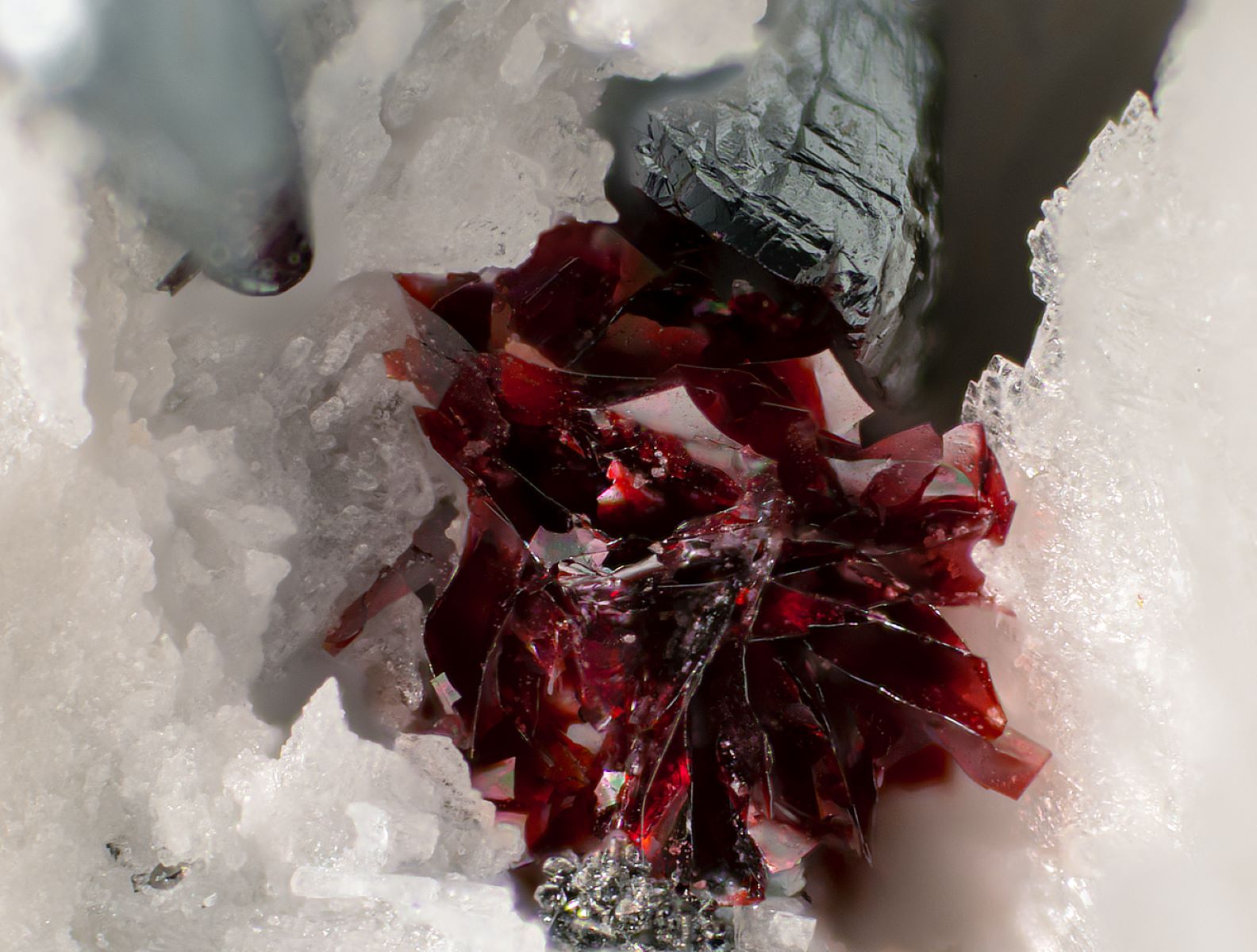
Fettelite is a rare mineral that sparks curiosity among geologists and mineral enthusiasts alike. But what makes Fettelite so special? This unique mineral, with its striking red color and complex chemical composition, has a story worth telling. Found primarily in hydrothermal veins, Fettelite is composed of silver, arsenic, sulfur, and selenium. Its discovery dates back to the early 20th century, yet it remains a subject of ongoing research. Why should you care about Fettelite? Understanding this mineral can shed light on geological processes and the formation of precious metal deposits. Whether you're a budding geologist or just someone fascinated by Earth's hidden treasures, Fettelite offers a glimpse into the intricate world of minerals.
Key Takeaways:
- Fettelite is a rare, shiny mineral with silver, arsenic, and sulfur. It's found in tiny crystals and has a reddish tint. Collectors love it for its uniqueness and history.
- Fettelite, discovered in 1967, is named after Karl Fettel. It's used in research, education, and even in jewelry despite being soft. It's often found alongside other rare minerals.
What is Fettelite?
Fettelite is a rare mineral that has intrigued scientists and collectors alike. Its unique properties and fascinating history make it a subject worth exploring. Let's dive into some interesting facts about this mineral.
-
Fettelite is a sulfosalt mineral primarily composed of silver, arsenic, and sulfur.
-
It was first discovered in 1967 in the Lengenbach Quarry in Switzerland.
-
The mineral is named after Karl Fettel, a Swiss mineralogist who made significant contributions to mineralogy.
-
Fettelite typically forms in hydrothermal veins, which are cracks in rocks filled with mineral-rich water.
-
Its crystals are usually tiny, often less than 1 millimeter in size.
Physical Properties of Fettelite
Understanding the physical properties of Fettelite can help identify it in the field. Here are some key characteristics.
-
Fettelite has a metallic luster, giving it a shiny appearance.
-
The mineral is generally opaque, meaning light does not pass through it.
-
Its color ranges from gray to black, often with a slight reddish tint.
-
Fettelite has a Mohs hardness of 2.5, making it relatively soft.
-
The mineral has a specific gravity of around 5.8, indicating it is quite dense.
Chemical Composition and Structure
The chemical makeup of Fettelite is complex, contributing to its unique properties. Let's look at some details.
-
Fettelite's chemical formula is Ag6As2S7.
-
It belongs to the monoclinic crystal system, which means its crystals form in a specific geometric pattern.
-
The mineral contains silver (Ag), which accounts for its metallic luster.
-
Arsenic (As) in Fettelite makes it toxic, so handling it requires caution.
-
The presence of sulfur (S) contributes to its formation in hydrothermal environments.
Occurrence and Locations
Fettelite is not commonly found, making it a prized specimen for collectors. Here are some notable locations where it has been discovered.
-
Besides Switzerland, Fettelite has been found in Germany.
-
The mineral also occurs in Peru, particularly in silver-rich mining areas.
-
Japan is another country where Fettelite has been identified.
-
In the United States, it has been found in Nevada.
-
Canada has also reported occurrences of Fettelite, particularly in British Columbia.
Uses and Applications
While Fettelite is not widely used in industry, it has some interesting applications and uses.
-
Fettelite is primarily a collector's mineral due to its rarity and unique properties.
-
It is often studied in mineralogical research to understand sulfosalt minerals better.
-
The mineral can be used in educational settings to teach about hydrothermal vein formation.
-
Fettelite's silver content makes it of interest to metallurgists, although it is not a primary source of silver.
-
Some jewelry makers use Fettelite in unique, custom pieces, despite its softness.
Interesting Tidbits
Here are some fun and lesser-known facts about Fettelite that add to its allure.
-
Fettelite is often found alongside other rare minerals like realgar and orpiment.
-
The mineral's name was officially approved by the International Mineralogical Association in 1971.
-
Fettelite can sometimes be mistaken for other silver-arsenic minerals, requiring detailed analysis for accurate identification.
-
The Lengenbach Quarry, where Fettelite was first discovered, is famous for producing over 100 different mineral species.
-
Fettelite specimens from the Lengenbach Quarry are highly sought after and can fetch high prices among collectors.
The Final Word on Fettelite
Fettelite, a rare mineral, holds a unique place in the world of geology. Its striking appearance and fascinating properties make it a subject of interest for scientists and collectors alike. Found primarily in hydrothermal veins, this mineral's rarity adds to its allure. Fettelite's chemical composition, including elements like silver and mercury, contributes to its distinct characteristics. Despite its scarcity, fettelite has been studied extensively, revealing insights into the geological processes that create such minerals. Its presence in specific locations around the globe highlights the diverse and dynamic nature of Earth's crust. Whether you're a geology enthusiast or just curious about the natural world, fettelite offers a glimpse into the complexity and beauty of minerals. Keep exploring and learning about these hidden gems, and who knows what other fascinating facts you'll uncover.
Frequently Asked Questions
Was this page helpful?
Our commitment to delivering trustworthy and engaging content is at the heart of what we do. Each fact on our site is contributed by real users like you, bringing a wealth of diverse insights and information. To ensure the highest standards of accuracy and reliability, our dedicated editors meticulously review each submission. This process guarantees that the facts we share are not only fascinating but also credible. Trust in our commitment to quality and authenticity as you explore and learn with us.
